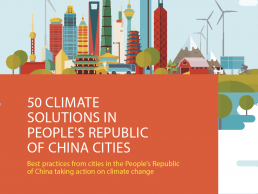First appeared in

Asian Development Bank
50 climate solutions from cities in the People's Republic of China
Ningbo is adapting to climate change risks through a holistic approach to water use, treatment, and drainage.
The city of Ningbo has become an eco-civilization model city for the PRC, through an evidence-based approach to climate change adaptation. Ningbo identified ‘hot spots’ that have the greatest climate change vulnerability and used climate change scenarios to assess a variety of different adaptation approaches. Finally, policies with greatest potential to protect local citizens were selected for implementation.
40%
REDUCTION IN CARBON FOOTPRINT OF WATER TREATMENT FACILITIES UNDER THE RESILIENCY PLAN
At the heart of the strategy are five water ‘co-governance’ principles, that integrate governance on wastewater treatment, flooding prevention, drainage planning, potable water security, and water saving. Low-pressure membrane technologies have been deployed to reduce stormwater runoff, serving to reduce flooding vulnerability as well as filter water before it pollutes the hydrosphere or reaches the treatment facility.

Ningbo has taken action in order to make the city more resilient to increasingly frequent stormwaters.
The Challenge
Ningbo is a low-lying coastal city on the east coast of the PRC. In order to adapt to the increased frequency and severity of storms that regional climate models predict, the city is focused on recognising the interlinked nature of water treatment, runoff and stormwater management in urban planning.
Co-Benefits
Economic Ningbo’s focus on adaptation and flood prevention reduces the financial risks associated with extreme weather events for industry and regional GDP.
Environment Water efficient technologies such as low-pressure membranes and gravity-based water transmission at water treatment plants are estimated to reduce the operational carbon footprint of the plants by 40%.
Health Floods affected over two and a half million people in Ningbo during
2013. The city’s Local Resilience Action Plan aims to reduce the negative health effects resulting from such flooding which will likely increase in frequency and severity.

